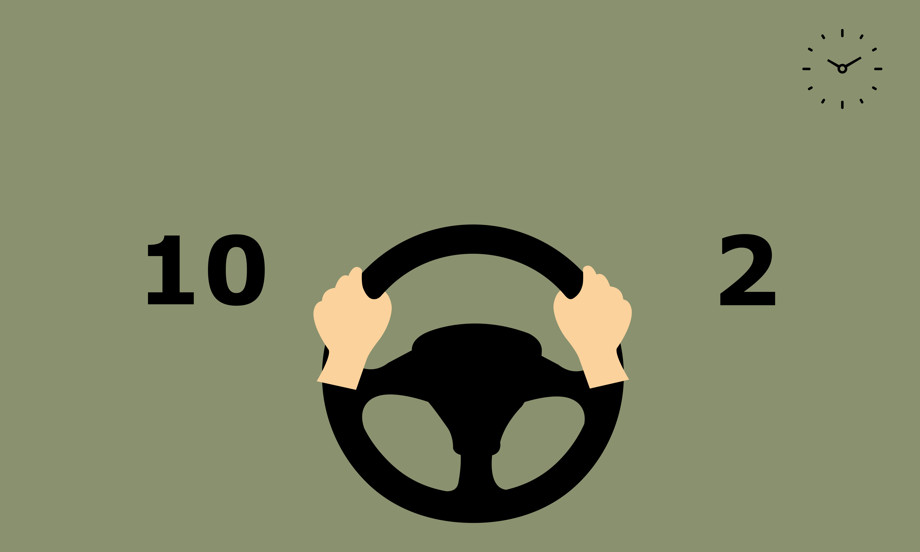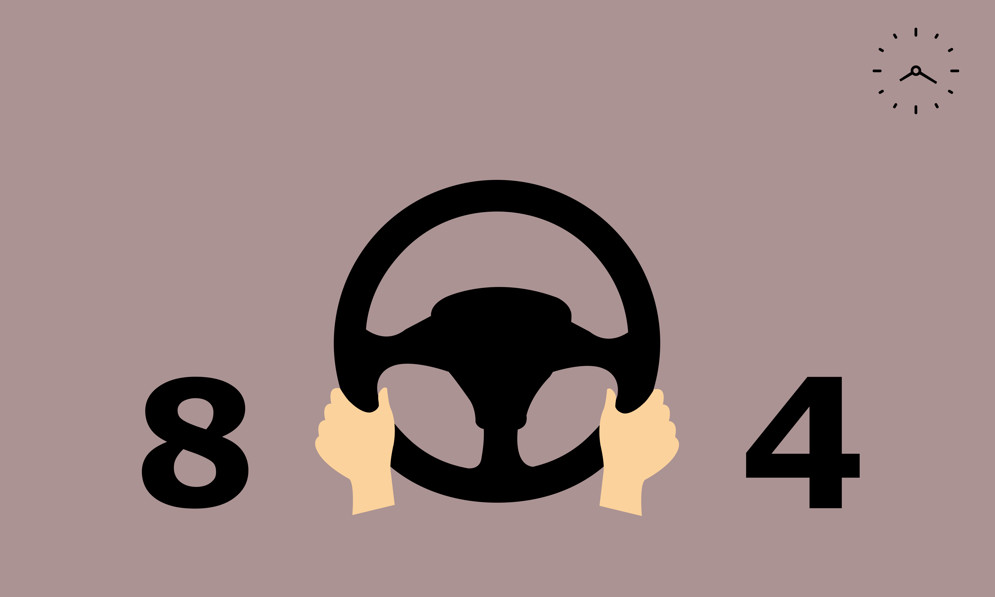Driving is a skill that requires attention, coordination, and practice. One of the fundamental aspects of driving is the way you hold the steering wheel.
Holding the steering wheel may seem like one of the simplest tasks when it comes to driving, but a surprising number of people still get it wrong. Proper hand placement not only ensures comfort but also enhances safety and control of the vehicle.
Let's take a look at the correct way to hold a steering wheel, its benefits, and how it can contribute to a safer driving experience.

The evolution of hand positioning
Traditionally, the recommended hand position on a steering wheel was the "10 and 2" position, referring to the placement of the hands as if the wheel were a clock face. This advice, however, was established in the era before power steering and airbags in cars, and was as much for leverage as it was control.
The recommendation has evolved with the advent of modern automotive safety features such as power steering and airbags, and today, most experts recommend the "9 and 3" position, with some also recommending the "8 and 4" position, mainly for long distance driving. Both are considered safer and more effective than "10 and 2" for several reasons:
-
Airbag safety: In the event of an airbag deployment, hands positioned at "10 and 2" can be thrust into the driver’s face, causing injuries. "9 and 3" or "8 and 4" reduce this risk.
-
Better control: These positions offer greater stability and control, allowing for more precise steering inputs.
-
Reduced fatigue: Holding the steering wheel at these positions can be more comfortable, reducing muscle fatigue during long drives.

Proper technique for holding the steering wheel
-
Adjust your seat: Before gripping the wheel, ensure your seat is adjusted so you can comfortably reach the pedals and the wheel. Your arms should be slightly bent, not fully extended.
-
Grip firmly but not tightly: Hold the wheel firmly enough to maintain control but avoid a tight grip, which can cause fatigue and reduce the sensitivity of your steering inputs.
-
Thumbs out: Rest your thumbs on the outside of the wheel rather than wrapping them around the inside. This position helps prevent thumb injuries in case of a collision and ensures better control.
-
Use your fingers: Your fingers should wrap around the wheel, providing a stable grip. Avoid using just your palms or resting your hand on top of the wheel.
-
Stay balanced: Maintain a balanced posture with your back against the seat and both hands on the wheel. Avoid leaning or slouching.

Common mistakes to avoid
-
One-handed driving: While it might seem convenient, driving with one hand reduces control and reaction time. Always use both hands for maximum control.
-
Incorrect hand positions: Avoid holding the wheel at "12 o’clock" (top of the wheel) or "6 o’clock" (bottom of the wheel). These positions provide less control and can lead to fatigue.
-
Distracted steering: Avoid multitasking while driving. Keep both hands on the wheel and stay focused on the road.
Holding the steering wheel correctly is a simple yet crucial aspect of safe driving. By adopting the "9 and 3" or "8 and 4" hand positions, using proper steering techniques, and avoiding common mistakes, you can enhance your control, comfort, and safety on the road. Remember, every detail in driving contributes to your overall safety and the safety of others around you.





